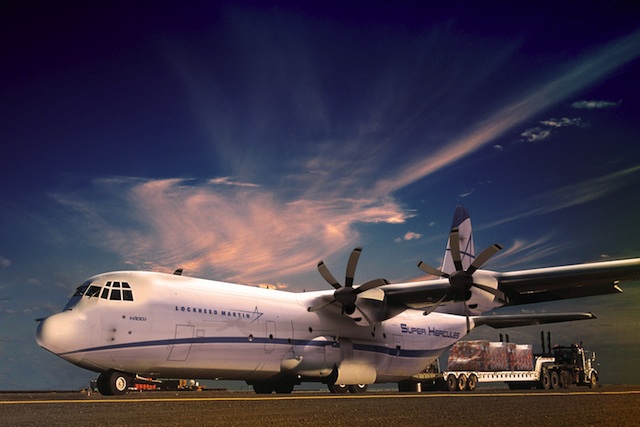Lockheed Martin has launched an updated civilian version of its C-130J Super Hercules transport, and expects to receive its first order from a customer later this year.
On 4 February, the Bethesda, Maryland-based company announced that it had kicked off the certification process on 21 January 2014, when it filed a notification letter with the US Federal Aviation Administration.
Lockheed says the LM-100J Super Hercules should achieve its first flight in 2017. The company expects to receive FAA certification by 2018, following a one-year flight test programme, and plans to deliver the first example that same year.
The timing comes amid a period of spending cuts by the C-130J's primary US military customers, making the new civilian LM-100J an attractive source of potential non-military Super Hercules revenue, says the company. "This would give us stability in [the Super Hercules] production programme and supply chain," Lockheed says, adding that the new aircraft meshes with a broader effort to diversify revenue.

Lockheed Martin
The company hopes the aircraft, which will have a base price of around $65 million, will follow the success of its predecessor, the civilian L-100 Hercules. Lockheed sold roughly 115 of those aircraft, which were based on the first-generation C-130, between 1964 and 1992. Now, however, many L-100s are approaching the end of their life cycles, sparking demand for new civilian freighters, it says.
"We see a natural progression of being able to recapitalise those fleets with an aircraft [that has] better reliability, better capability [and] better maintainability, safety and performance," Lockheed tells Flightglobal.
The LM-100J is modelled after the latest-generation C-130J Super Hercules, which has been in production since the early 1990s. Unlike previous updates to the C-130, Lockheed says it took a "revolutionary approach" with the J model, giving it digital avionics and making a series of design changes to improve performance and reduce operating costs.
"All of those concepts are flowing to the LM-100J," Lockheed says.When it first developed the original C-130J, it also received a type certificate for a civilian version. But primary customers were militaries, and Lockheed says it lost the civilian certificate as the aircraft's military avionics, communications and navigation equipment evolved.
Described by the company as a "civil multi-purpose air freighter," the new LM-100J will have modern avionics and a "digital back end" system with a loadmaster computer station that will assist with loading and weight and balance. The cargo compartment will be 4.6m (15ft) longer than the L-100, providing space for two additional pallets, and the aircraft will be able to carry 33% more payload on a 2,500nm (4,630km) flight, says Lockheed.
The LM-100J, which has the ability to fly 2,200nm with a 18,200kg (40,000lb) payload, has about 50% more range than the L-100, according to Lockheed. Its top speed will be 355kt (657km/h); 10% faster than its predecessor. In addition, the LM-100J will be operated by two flight crew (instead of three for the L-100), will burn 15% less fuel and have maintenance costs that are 35% less, the airframer says.
LM-100Js will be built at Lockheed's Marietta, Georgia-facility and will be powered by four Rolls-Royce AE2100D turboprops, which will provide 30% more power than the L-100's Allison T-56 powerplants, the company says.
Lockheed estimates it can sell 75 to 100 LM-100J's over 20 years, a level of demand similar to that for the original L-100. Though the company declines to name prospective customers, it says oil, gas and mineral exploration companies are interested. Such companies must transport heavy equipment like generators and earth moving equipment to remote outposts not linked to railways or roads. They need rugged aircraft that can operate from "austere", unpaved runways, says Lockheed.
The LM-100J will help bring stability to the Super Hercules programme, as the US government trims its defence budget, says Lockheed. In fiscal year 2014, the US Navy will receive $69 million for procurement of tanker-variant KC-130Js; almost half of the $134 million the service requested, according to budget documents. Likewise, the US Air Force requested $1.4 billion but will receive $1.3 billion for the procurement of C-130Js, including special-mission MC-130Js and search and rescue HC-130Js. Additional defence funding cuts are possible for the next fiscal year.
"[The LM-100J] adds another capability towards the Hercules portfolio that hasn't existed in a while," Lockheed says. "It looks really promising."
Source: FlightGlobal.com



















